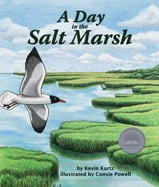Alignment to Standards for AZ

| Grade | Number | Standard |
|---|---|---|
| 1 | PO 2 | Compare the habitats (e.g., desert, forest, prairie, water, underground) in which plants and animals live. |
| 1 | PO 2 | Compare the following observable features of living things: movement _ legs, wings, protection _ skin, feathers, tree bark, respiration _ lungs, gills, support _ plant stems, tree trunks, |
| 1 | PO 2 | Identify resources that are renewable, recyclable, and non-renewable. |
| 1 | PO 3 | Describe how plants and animals within a habitat are dependent on each other. |
| 1 | PO 3 | Identify observable similarities and differences (e.g., number of legs, body coverings, size) between/among different groups of animals. |
| 1 | PO 3 | Identify common uses (e.g., construction, decoration) of basic Earth materials (i.e., rocks, water, soil). |
| 1 | PO 4 | Identify the following as being natural resources: air, water, soil, trees, wildlife, |
| 2 | PO 1 | Identify animal structures that serve different functions (e.g., sensory, defense, locomotion). |
| 3 | PO 1 | Identify adaptations of plants and animals that allow them to live in specific environments. |
| 3 | PO 3 | Explain the interrelationships among plants and animals in different environments: producers _ plants, consumers _ animals , decomposers _ fungi, insects, bacteria |
| 3 | PO 4 | Describe how plants and animals cause change in their environment. |
| 3 | PO 5 | environmental factors (soil composition, range of temperature, quantity and quality of light or water) in the ecosystem may affect a member organismês ability to grow, reproduce, and thrive. |
| 3 | PO 6 | Describe ways humans use Earth materials (e.g., fuel, building materials, growing food). |
| 4 | PO 1 | Recognize that successful characteristics of populations are inherited traits that are favorable in a particular environment. |
| 4 | PO 1 | Compare structures in plants (e.g., roots, stems, leaves, flowers) and animals (e.g., muscles, bones, nerves) that serve different functions in growth and survival. |
| 4 | PO 1 | Identify the sources of water within an environment (e.g., ground water, surface water, atmospheric water, glaciers). |
| 4 | PO 2 | Differentiate renewable resources from nonrenewable resources. |
| 4 | PO 2 | Give examples of adaptations that allow plants and animals to survive. camouflage _ horned lizards, coyotes, mimicry _ Monarch and Viceroy butterflies, physical _ cactus spines, mutualism _ species of acacia that harbor ants, which repel other harmful ins |
| 4 | PO 2 | Describe the distribution of water on the Earthês surface. |
| 4 | PO 5 | Describe how regions and places (e.g., Grand Canyon, Colorado River, Casa Grande Ruin, Canyon de Chelly, Yucatan Peninsula) have distinct characteristics. |
| K | PO 1 | Identify the origin of natural resources (e.g., fish from sea, minerals from the ground, wood from trees, food from farms). |
| K | PO 2 | Recognize that resources are renewable, recyclable, and non-renewable. |